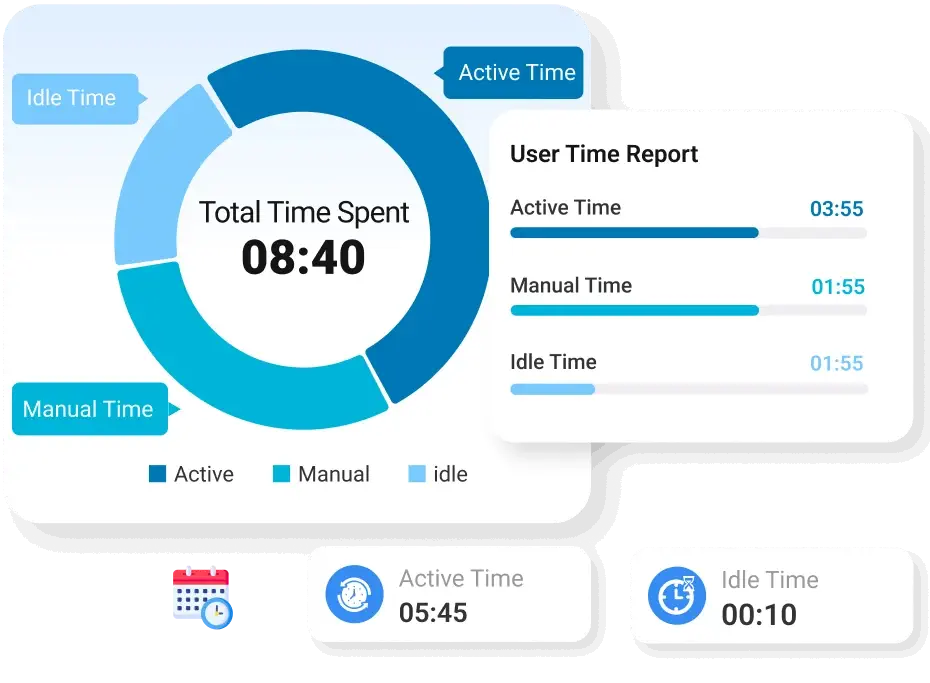
 Tracey Taylor
Tracey Taylor
Aug 12, 2025
Reading Time: 7 Minutes

Even the most well-organized companies can be destroyed by scheduling issues, last-minute shift changes, and staff weariness.
Imagine a workplace where these problems are eliminated and are replaced with a motivated workforce, smooth coordination, and exponential production improvements. This is made possible by set schedules.
In this post, we analyze how fixed schedules function, their merits, and cons, and how to apply them efficiently using data-driven tactics.
A fixed schedule assigns employees consistent, predetermined shifts that repeat weekly. Unlike flexible or rotational models, this structure ensures stability, making it ideal for industries requiring reliability.
Common Examples of Fixed Schedules:

|
Scheduling Model |
Key Feature |
Best For |
|
Fixed Schedule |
Consistent working hours |
Businesses requiring predictable staffing |
|
Flexible Schedule |
Employees choose work hours |
Knowledge-based or remote jobs |
|
Rotational Shift |
Employees rotate shifts (e.g., morning to night) |
24/7 operations like hospitals or security firms |
|
On-Call Schedule |
Employees work as needed |
Emergency services or IT support |
What if your biggest productivity killer isn’t your team, it’s their unpredictable schedules? Your team’s best work happens when they’re not stressed about ‘when. Fixed schedules aren’t rigid; they’re the rhythm your business needs to thrive.
1. Improved Workforce Efficiency
With a fixed schedule, businesses can streamline operations, ensuring employees are always available when needed. This reduces the risk of understaffing or overstaffing, leading to better resource allocation and reduced labor costs.
2. Predictability for Employers & Employees
3. Better Collaboration & Teamwork
When teams work together consistently, communication improves. Employees understand their roles, teamwork strengths, and project timelines are met more efficiently.
4. Compliance with Labor Laws & Regulations
Many industries have strict labor laws regarding overtime, breaks, and work hours. Fixed schedules simplify compliance by ensuring shifts align with legal requirements.
5. Optimized Payroll & Budgeting
Businesses with fixed schedules can manage payroll more effectively, as payroll processing, tax calculations, and benefits administration become more predictable.

While fixed schedules offer numerous benefits, they’re not without potential drawbacks:
|
Challenge |
Solution |
|
Lack of Flexibility – Employees may struggle with rigid hours. |
Implement shift swapping or hybrid scheduling. |
|
Burnout in High-Stress Jobs – Long shifts can lead to fatigue. |
Use break management tools to enforce rest periods. |
|
Recruitment Difficulties – Some workers prefer flexible options. |
Offer incentives like bonuses or paid time off. |
|
Rush Hour Commutes – Fixed schedules may lead to traffic issues. |
Provide staggered shifts to ease commuting. |
Having a fixed schedule for your team ensures consistency and efficiency. With StaffViz, you can automate scheduling and keep your team under control.
· Set Your Operating Days
Decide on the days when your business will be open. Whether you take the Monday-to-Friday model or a different schedule—like Monday to Saturday or Wednesday to Sunday—choose a framework that works for your business needs.
· Determine Business Hours
Determine how many hours your business needs to be covered each day. Do you require 24/7 coverage, divided shifts, or the usual 8-hour workday? Consider optimal start and end times for both productivity and employees' well-being.
· Set Shift Requirements
If your business operates around the clock, you’ll likely need three shifts (e.g 8:00 AM – 4:00 PM, 4:00 PM – 12:00 AM, 12:00 AM – 8:00 AM). For shorter hours, a single shift may be sufficient.
· Set a Duration for the Fixed Schedule
If not permanent, indicate how long the schedule will run. A period of one month per cycle offers staff a chance to adjust while allowing for amendments if needed.
· Assign Employees to Shifts
Since your schedule is now complete, assign staff to shifts based on availability and workload division.
· Launch the New Schedule with StaffViz
Staff management software such as StaffViz can help companies avoid overtime violations, maintain compliance with labor laws, and provide equitable work schedules for employees.

1. Use Scheduling Tools:
Manually managing fixed schedules is outdated. Workforce management platforms like StaffViz help businesses:
· Automate shift assignments
· Track employee availability & performance
· Optimize staffing needs using historical data
2. Adopt Workforce Analytics
Using predictive analytics, companies can also identify the best working times and modify rigid working schedules in response. This eliminates unnecessary labor expenses and maximizes operating efficiency.
3. Allowing Shift Swaps & Self-Scheduling
A strict fixed schedule may be demanding for employees. Permitting shift swaps via an employee portal provides employees with some flexibility without impacting business operations.
4. Promote Compliance & Fair Scheduling
To preserve employee happiness and stay out of conflict with the law, it is essential to make sure that fair scheduling procedures and labor rules are followed. Consider:
· Adhering to overtime regulations and rest periods
5. Regularly Review & Adjust Schedules
Fixed schedules should not be static. Periodic reviews allow businesses to refine schedules based on real-time data and evolving needs. Evaluate:
6. Balance Business Needs with Employee Well-Being
A rigid schedule that ignores employee preferences can lead to burnout and higher turnover rates. To optimize fixed schedules:
At StaffViz, we go beyond traditional scheduling. Our workforce productivity solutions ensure that businesses of all sizes can:
1. Automate workforce planning for higher efficiency
2. Optimize employee scheduling using intelligent algorithms
3. Reduce labor costs through predictive staffing
4. Enhance employee satisfaction with a better work-life balance
With StaffViz, managing fixed schedules becomes a seamless, stress-free process.

A standard timetable is a successful path to success if your business finds success in consistency, repeated procedures, and setting expectations for employees. However, the ideal is to find a balance between predictability and flexibility to maintain workers' motivation and productivity.
Looking to automate your workforce scheduling? Reach out to StaffViz today and learn how our AI-powered solutions can revolutionize your business operations.
Enhance team efficiency and collaboration with StaffViz, the ultimate tool for managing remote and hybrid teams.
START FREE TRIAL
Powered by Staffviz